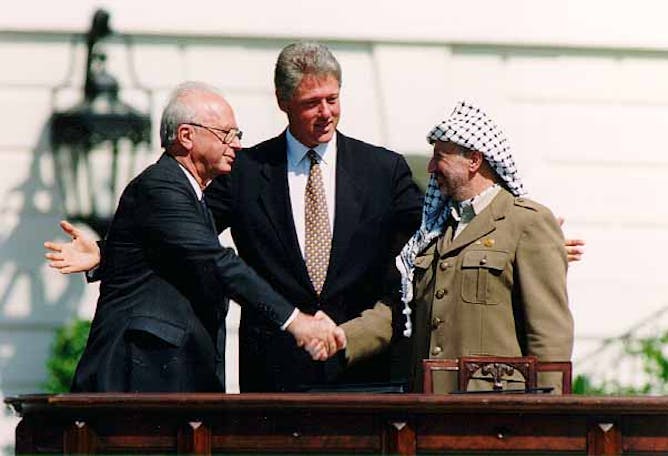|
It's been 25 years since then US President Bill Clinton oversaw a famous handshake between Israel’s Prime Minister Yitzhak Rabin and Palestinian leader Yasser Arafat on the White House lawn. The Oslo Accords, a series of agreements between Israel and the Palestinians that were considered a road map to peace, had just been signed. The optimism of that day has evaporated. And in recent years any hopes for a settlement have steadily receded, making peace in the Middle East a distant dream. Tony Walker explains why.
|

US President Bill Clinton, Israeli Prime Minister Yitzhak Rabin and Palestinian leader Yasser Arafat sign the historic Oslo accord at the White House in September 1993.
Wikicommons/Vince Musi
Tony Walker, La Trobe University
In 1993 the Oslo Accords were struck in optimism, but a quarter of a century later little has changed - and there's no real prospect it ever will.
|
Fish in focus
|

Alexandria Volkening, The Ohio State University
Zebrafish are known for their black and gold stripes, but researchers are still figuring out how pigment cells interact to form these patterns.
| |

Ruth H. Leeney, Natural History Museum
Africa's remaining sawfishes are found along the coasts of Madagascar and Mozambique. But they are under threat.
|
|
|
|
|
Politics + Society
|
-
María Isabel Alfonso, St. Joseph's College of New York
Cuba is avowedly secular. But as the country debates a new Constitution that would protect LGBT rights, churches have come out strongly against gay marriage — a sign of change on the Communist island.
|
|
Science + Technology
|
-
Charles Marshall, University of California, Berkeley
A tiny percentage of museums’ natural history holdings are on display. Very little of these vast archives is digitized and available online. But museums are working to change that.
|
|